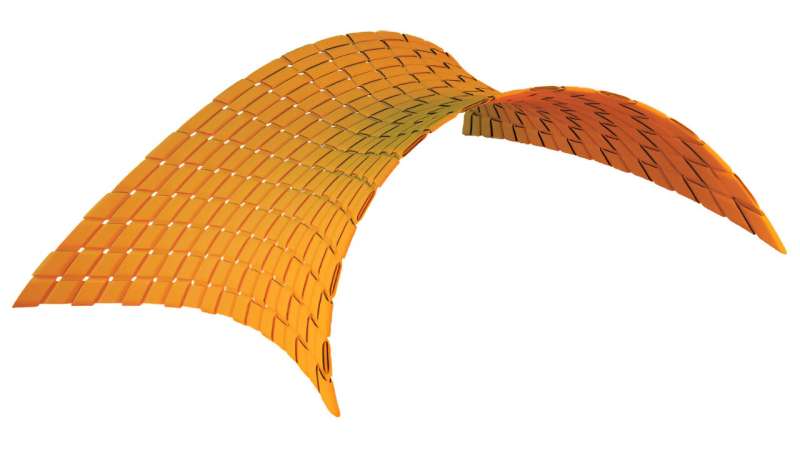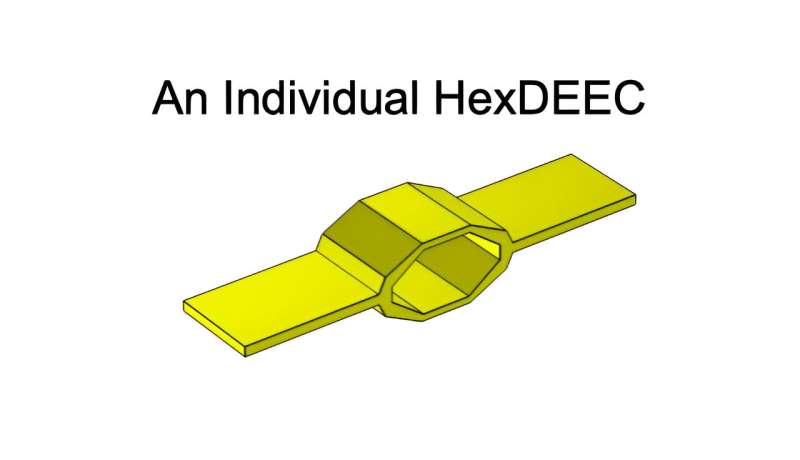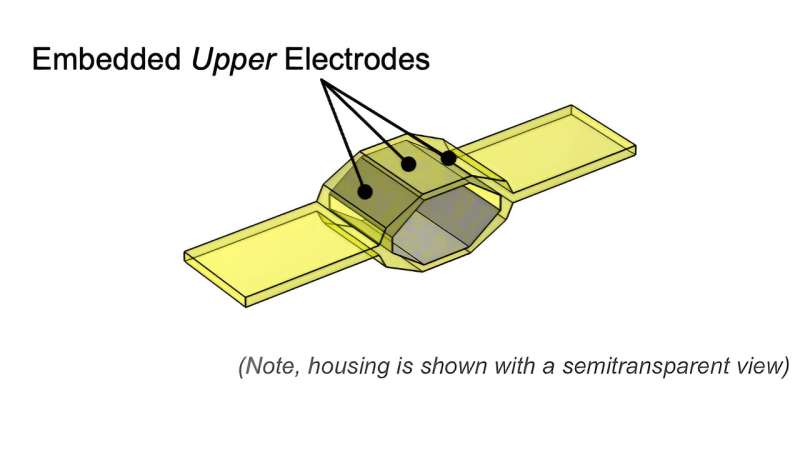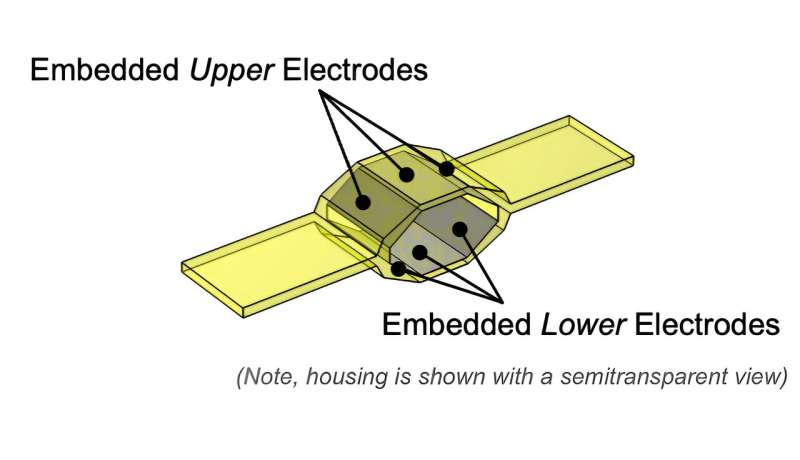This article has been reviewed according to Science X's editorial process and policies. Editors have highlighted the following attributes while ensuring the content's credibility:
fact-checked
trusted source
proofread
Electrostatic generator to produce renewable energy from flexible structures

To shapeshift into the yoga pose called "destroyer of the universe," a human must gumby a leg behind their neck to point their toes directly at the sky. For non-gumbys, that feat might seem superhuman or even metahuman—is that a person or a pretzel? Now, an ultraflexible metamaterial could perform equally super feats to generate clean energy from the abundant but often overlooked energy that vibrates through our world.
Introducing: The yoga of energy.
"There's a lot of potential energy that exists out there in daily life," said James Niffenegger, a mechanical engineer at the National Renewable Energy Laboratory (NREL). Waves constantly roll toward shore; buildings sway in wind; cars depress pavement. All these seemingly minor movements contain potential renewable energy. We just need a way to harness it. The yoga of energy could help.
Officially called hexagonal distributed embedded energy converters (or hexDEECs for short), these ultraflexible, centimeter-sized electric machines just earned their first patent. And although one alone can only generate one-millionth of a joule of energy every time it is stretched (a common lightbulb burns about 100 joules per second), the machines can weave together to form what their inventors call metamaterials—flexible fabrics, nets, ropes, clothing, walls, or even entire roads built from a hive of these hexagonal machines.

HexDEECs are built with resilient and affordable materials, like silicone rubber, which makes them both cost-effective and ideal for unideal conditions, like the rambunctious, salty ocean. "Imagine a mooring line made out of a braided series of hexDEECs at the bottom of the ocean," said Blake Boren, a senior engineer at NREL and one of the inventors of hexDEEC.
"You're going to need something to hold down a navigational buoy, a mooring buoy, a ship, or a wave energy converter anyway," Niffenegger added. "Might as well use hexDEECs, and you could produce some power."
HexDEECs were originally born out of a broader quest. Panagiotis George Datskos (who goes by Panos), a senior research advisor at NREL, and Jochem Weber, chief engineer for NREL's water power program, were hunting for ways to generate electricity from electric fields, like the static electricity that builds up on socks shuffling over carpet.
Datskos and Weber wanted to build something called an electrostatic variable capacitance generator, a device that relies on built-up electric charge to briefly store and then generate electricity. Datskos proposed pairing two separate plates—like one fluffy sock and a carpet—connected by a spring. When external forces, like a wave or a wind gust, compress the spring, the sock and carpet come together, and an electric charge fizzes into existence. Release the plates, and that charge can now be harvested and used to power, say, a sensor on a buoy, a smart watch, or a bit of the grid.
When Datskos and Weber brought Boren in, he proposed a more agile, spring-free design that, as Boren said, "cut multiple carrots with one knife." His hexagonal silicone rubber version takes advantage of its own flexible body to cycle between being compressed and open, generating that precious electricity. The hexagonal shape also makes it possible to weave the machines together into the larger, more powerful metamaterials.

With that, hexDEEC was born.
"I jumped into the game with some innovation that fleshed out the hexDEECs," Boren said. "And then James, the analytical, numerical, and empirical connoisseur of hexDEECs, sought to make sense of it all. Like, how realistic is this?"
Although the hexDEEC technology is still theoretical, similar electrostatic variable capacitance generators have already achieved promising results. One wave energy company, called SBM Offshore, ringed a big tube with corresponding variable capacitance-based mini energy generators to convert wave energy into usable electricity. ("It's like rings on a worm," Niffenegger said, describing the tube design.) And a group of scientists from the University of Colorado Boulder built similar materials that resemble some kind of alien sea creature more than a collection of machines.
Like their cousins, hexDEECs could do more than just generate energy. In their actuator mode, these metamaterials could shapeshift: HexDEEC windows could shift slightly to prevent glare, walls could stiffen to reduce sway in high winds or an earthquake, or solar panels could vibrate to free themselves of sun-blocking dust.
"You can adapt a structure essentially in real time and continuously throughout," Boren said. "You could, in theory, on the fly, change the geometry of a hexDEEC-based structure, to help achieve some greater goal, such as optimizing overall energy conversion or survival during large energy events."

"Hopefully," Niffenegger added, "this will enable some flexible technologies that can withstand the somewhat unforgiving conditions of the oceans. When times get tough, it's good to be flexible."
Boren sees potential for hexDEECs beyond the ocean. His latest vision is to embed hexDEECs into highways, so cars can power self-luminating roadway lines or even roadside lamps. As a car drives over a hexDEEC roadway, they would compress the hexDEEC structure. As the vehicle moves on, the structure opens, generating electricity. "There's lots of road surface area, and hexDEECs are, conceivably, easy to maintain," Boren said.
But before Boren can build his hexDEEC highways, he and Niffenegger will continue to refine their design not only to confirm that such theoretical applications are possible but also to potentially increase their overall performance.
"All this is still very much foundational research," Boren said. "But I'm really excited to see what other possibilities are ahead of us."















